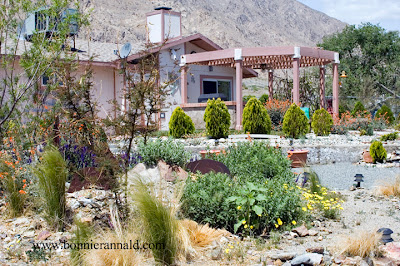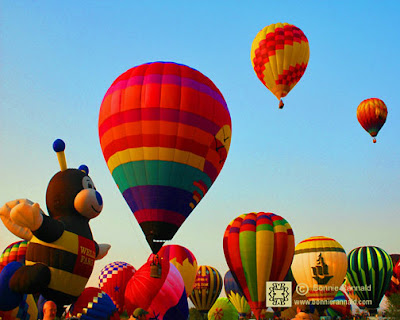BUILDING A NATURE FRIENDLY YARD
In my last few posts, I have been writing and sharing photos about subjects from my yard. On this post, I thought it only appropriate to show my yard and tell how it evolved from a weed patch to a xeriscaped, wildlife friendly retreat.
I relocated to Rural Nevada after 25 years in Las Vegas, because I needed the artistic freedom of an open area away from noise and traffic. However, life away from the city required some adaptation. Gone were the established and manicured yards with not a blade of grass out of place.
The yard where I moved was in bad shape, having been neglected for years. It was overgrown with dry weeds, dead trees and tumbleweeds. Before I could ever begin to think about landscaping, I hired a cleaning crew to remove all the dead growth. What was left was an almond tree, four elm trees, and an about ¾ acre of bare ground.
There are a couple of factors that must be considered when trying to landscape in a high desert area. One, the climate for growing things goes from one extreme to the other--hot summers, cold winters and harsh winds. The other factor wasn’t quite as obvious. This land had once been part of the lake bed and was full of rocks. For every inch of soil, there seemed to be one foot of rocks. Digging holes became my worse nightmare.
As the holes were dug, the rocks were piled in an area that was to be a landscape hill. The more I dug, the bigger the hill grew. Finally, I was forced to have most of the rocks excavated with a back hoe. I covered the remaining rocks with a sandy, loam soil and planted a colorful mixture of drought tolerant plants, including, Russian sage, salvia, blanket flower, wild desert dandelions, and a desert willow tree.
Just down from the steps leading to the yard, I planted two purple robe locus trees that will provide shade from the afternoon sun.
A reverse osmosis drinking water system was plumbed for the run-off water to drain and collect outside in a pond. A water feature in the yard not only creates a relaxing setting for my enjoyment, it also attracts birds and other wildlife all year long.
The photo below is the view looking from the pond to the southwest area of the yard.
After several years of hard work, my xeriscaped yard became a reality. Now I have a low maintenance yard that is wildlife and camera friendly. I can sit back, relax and enjoy the sky, lake, mountains and wildlife any time of the night or day.
With my Nikon and tripod, my goal is to recreate the scene as it appears in nature, to preserve in a photographic image the awesome, yet simplistic beauty of the scene that waits around a bend or over a hill. Sometimes it's a colorful landscape, and many times I'm allowed in the presence of the numerous creatures that adapt to life in the wild.
What
an exciting and interesting photo-adventure this day has been. I love
it when I am drawn to an area and not knowing what to expect I get
treated to new experiences.
Sign up and follow my blog to see where my next photo-adventure will be!
Photography places me in the moment where I can share that moment in time. It becomes a life story as represented by my interaction with the scene. The happiness and beauty or the sorrow and strife; how I focus leaves a lasting impression that might touch the viewer on a spiritual level.
"Reflecting Nature's Artistry"
No images on this blog are within Public Domain or are available for free download.
All rights reserved, world-wide and images protected by Digital
Millennium Copyright Act (DMCA). All photography, graphics, text,
design, and content is copyrighted by Bonnie Rannald and should not be
copied, down-loaded, transferred and re-created in any way without the
express consent, in writing to Bonnie Rannald.
For information on Bonnie Rannald licensed, right-managed images, please
submit a written request.






















